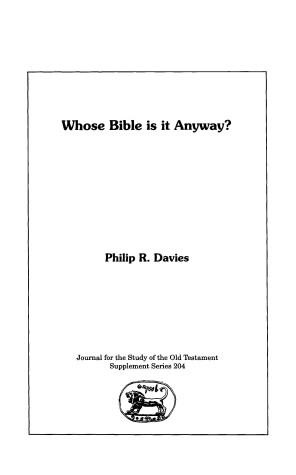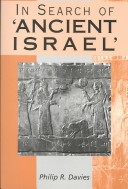Journal for the Study of the Old Testament Supplement S.
1 primary work • 3 total works
Book 204
No. 148.
The appearance in 1992 of 'In Search of Ancient Israel' generated a still raging controversy about the historical reality of what biblical scholars call 'Ancient Israel'. But its argument not only takes in the problematic relationship between Iron Age Palestinian archaeology and the biblical 'Israel' but also outlines the processes that created the literature of the Hebrew bible-the ideological matrix, the scribal milieu, and the cultural adoption of a national literary archive as religious scripture as part of the process of creating 'Judaisms'. While challenging the whole spectrum of scholarly consensus about the origins of 'Israel' and its scriptures, it is written more in the style of a textbook for students than a monograph for scholars because, its author believes, it offers an agenda for the next generation of biblical scholars. 'In this reader-friendly polemic, Davies brilliantly addresses an essential issue and at numerous points represents a vanguard in biblical studies' (Robert B. Coote, Interpretation). 'A rich mine of provocative quotations, will provoke considerable opposition and debate, and deserves to be read and reflected on by all biblical scholars' (Keith Whitelam, SOTS Book List).
No. 144.


